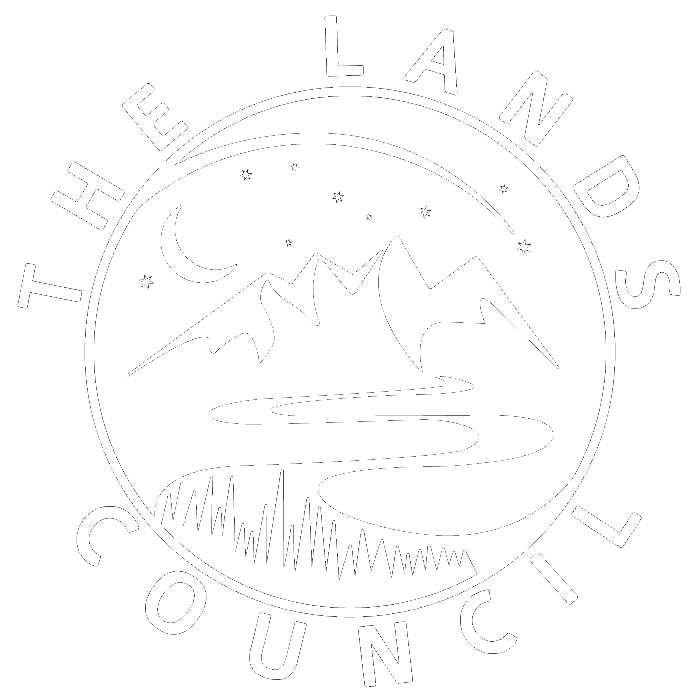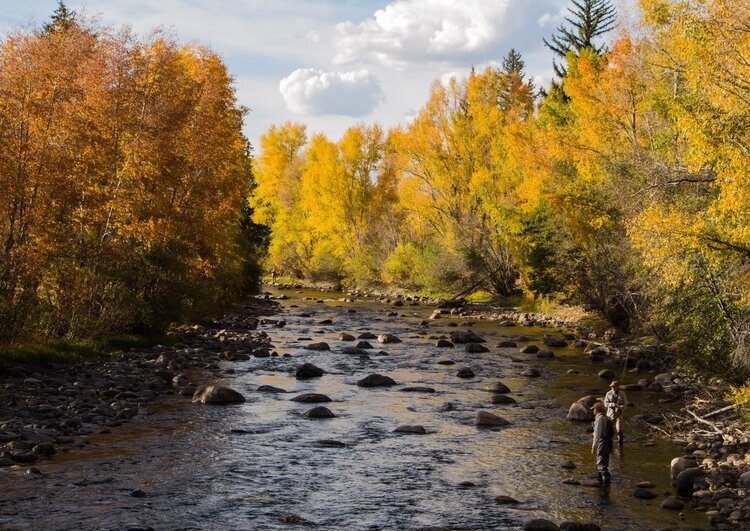By Eugene Bryson
No surprise that evergreen trees dot the downtown skyline in Spokane. Ponderosa pines and Douglas-firs are the true skyscrapers in the city. If you’re looking to add a natural touch to your urban surroundings, native trees, shrubs and flowers are the way to go.
Why go native? Native plants such as goatsbeard and Pacific bleeding heart are accustomed to our climate and soil conditions, so they need less water and care than non-native species.
To help you landscape your yard (and to identify these natural wonders), we’ve rounded up some of the most common native trees, shrubs and flowers you’ll see in Spokane.
Trees
Ponderosa Pine
Spokane’s official tree reigns as the predominant pine in our forests. These colossal conifers are drought-tolerant, hardy, and can live 500 to 600 years. Ponderosa pines drop most of their needles and prickly pine cones in the fall.
Fun fact: The Ponderosa pine’s grooved bark smells like vanilla, with hints of butterscotch.
Douglas-Fir
The Douglas-Fir is a festively popular Christmas tree. Birds love to snack on the seeds, and hawks and owls use the trees for roosting.
Douglas Hawthorn
This small tree produces black berries that attract birds and wildlife. It protects itself with large thorns. Don’t confuse the Douglas Hawthorn with English Hawthorn, which is an invasive species from Europe.
Rocky Mountain Juniper
These small trees or large shrubs grow anywhere from 3 to 30 feet high. They’re popular for windbreaks and hedges. They also grow in almost any type of soil, but they favor spots with full sun.
Western Larch
These deciduous trees are different in a spectacular way because, unlike other conifers, they lose their needles in the fall. The needles turn a glorious gold before dropping each autumn.
You may call them tamaracks, even though that’s technically a different species. You’ll see Western larch mainly in forests north and east of town, but they’re a popular landscaping choice in Spokane.
Black Cottonwood
This fast-growing, thirsty tree can grow to 160 feet. Developers like them since they establish themselves quickly and provide shade.
But black cottonwoods also make a mess: They shed seeds surrounded by white cotton fluff in late spring. They also drop sticky bud capsules that love to attach to bare feet or dog paws, and they stain the ground.
Shrubs
Blue Elderberry
This popular plant produces berries that are a favorite of people and wildlife alike, but please don’t eat the berries while they’re still green.
At best, they’ll give you a stomach ache, and at worst, they could kill you. The berries are safe to eat when they’ve turned dark blue, usually in late summer.
Rabbitbrush
Rabbitbrush stands out because it flowers in late summer and fall when other flowering plants have started to fade. Blooms are bright yellow and gray, and fine hairs cover the leaves. Despite the name, rabbits do not eat this shrub.
Smooth sumac
This shrub is a stunner in all four seasons, but especially in the fall when its seed heads turn a dark rust color, and its leaves turn a bright orange-red. Smooth sumac is drought tolerant and grows well in poor soil.
Snowberry
This popular ornamental shrub produces pretty pink blooms in spring and white berries in winter. These berries are a good winter food source for birds and other wildlife.
Flowers
Blanket flower
This beautiful and hardy perennial resembles brightly colored blankets woven by Native Americans. The daisy-like blooms flower from May through September.
Broadleaf lupine
Lovely lupines grace the land with their purple blooms in spring. They’re a sight to see in subalpine meadows, but they’re also abundant in Spokane gardens.
Penstemons
Birds, bees, and butterflies love these perennial flowers, so they’re great if you’re trying to attract pollinators. They can also take the Spokane heat.
Purple Sage
This colorful herb also likes it hot. It’s drought-tolerant and low maintenance. People use the fragrant, savory leaves for cooking and seasoning. Purple blooms appear in late spring through late summer, and the foliage turns a deep purple in fall.
Help Us Increase Spokane’s Trees
We are collaborating with the City of Spokane’s Urban Forestry Department on the new project: SpoCanopy. The goal is to have a 40% canopy cover throughout Spokane by 2030. You can help by participating in the project and by choosing native trees and plants for your landscaping.
Eugene Bryson is a freelance writer, nature lover, and home inspector. As a Washington native, he roots for the Mariners to one day make it to the World Series.











